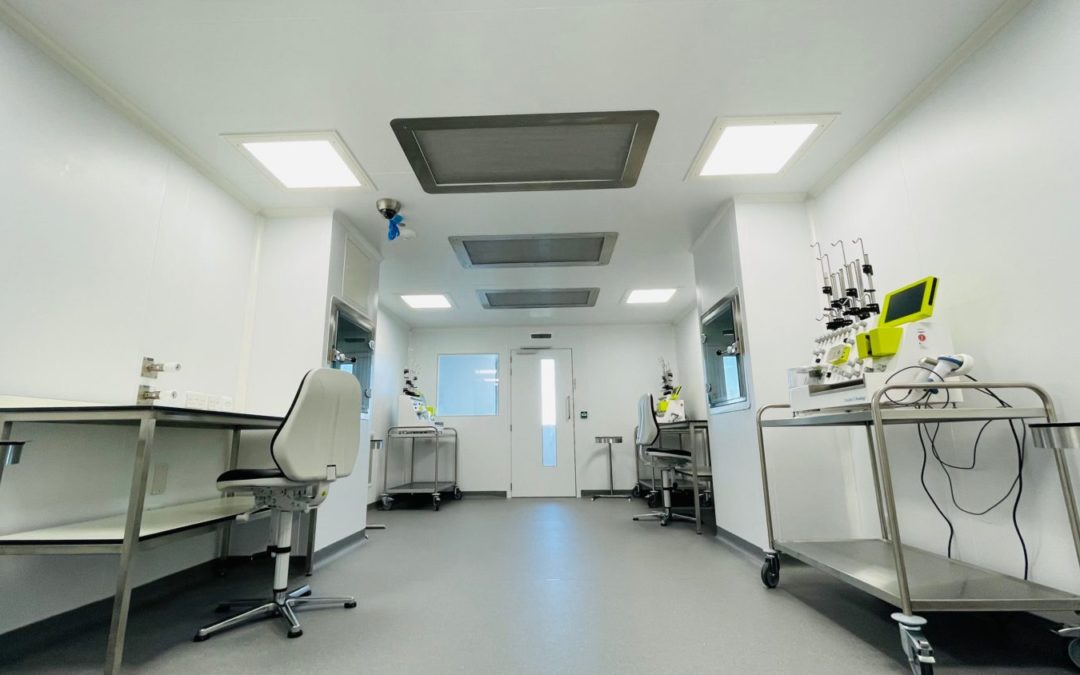Cell and gene therapy are two fairly new practices within the medical field. However, they’ve recently become recognized as viable forms of treatment for various life-threatening conditions. As their popularity increases among healthcare providers worldwide, there’s been a greater push to research, develop and distribute these treatments — and in order to do that safely and effectively, cleanrooms are critical.
Here’s a little more information about what cell and gene therapy cleanrooms are, as well as some considerations you may make before designing one of your own.
What Is Cell and Gene Therapy?
Cell and gene therapy are both forms of regenerative medicine. They involve extracting cells, protein, and/or genetic material (DNA) from a patient or donor, then altering the sample to provide highly personalized treatment, then reinjecting the sample into the patient.
Although these are relatively new therapies, many healthcare providers are hopeful that they’ll offer longer-lasting effects than existing methods. They’ve also been found to be safer, more targeted, and less invasive. For patients with serious illnesses, the research and development of these therapies could be a matter of life and death.
Design Considerations for a Cell and Gene Therapy Cleanroom
Just like any other modular cleanroom, cell and gene therapy cleanrooms can be constructed as free-standing structures or supported by the existing building structure. However, the work done within them requires more complex production processes than previous medicinal applications. Things like cellular engineering, genetic engineering, growth, and purification all must be done in an even more controlled environment, so that results are sure to be safe, effective, and repeatable.
That said, cell and gene therapy cleanrooms require some unique cleanroom design considerations, including (but not limited to) the ones listed below:
ISO Classification for Cell and Gene Therapy Cleanrooms
Most cell and gene therapy cleanrooms must meet stringent ISO standards, usually between ISO Class 5-7. For ISO 5 classification, this means that they must have at least 240 air changes per hour, 35-70% ceiling coverage, and to ensure no more than 3,520 particles 0.5μm or larger allowed per cubic meter.
Additional Equipment and Technology for Cell and Gene Therapy Cleanrooms
Each cleanroom industry and application requires a variety of unique pieces of equipment and technology. Here are a few on the list that are often required for cell and gene therapy cleanrooms:
- Gowning rooms
- Hazardous material storage
- Laminar flow hoods, biosafety cabinets, fume hoods
- HEPA and ULPA filtration systems
- Standard, flow-through, LED strips, and other lighting options
Angstrom Technology’s Latest Cell and Gene Therapy Cleanroom Project
Want to see an example of a recent cell and gene therapy cleanroom project? Here’s some information on one built by our partners at Connect 2 Cleanrooms!
This project consisted of a full cleanroom suite that was housed within a two-story building with 33 internal rooms. It featured high levels of filtration and cleanliness, along with a variety of unique features, including:
- ISO 5 classification (equivalent to EU GMP Grade B)
- HEPA filtration
- Fire-rated active pass-through chambers
- Vaporized hydrogen peroxide (VHP) cabinets
- Integrated medical gas systems
- Cryostorage
Read more about this project on our Cell & Gene Therapy Cleanroom Suite project page.
Cell and gene therapy is a fast-growing industry! If you’re looking to install a cleanroom for your cell and gene therapy application, reach out to our team at Angstrom Technology. Our cleanroom design experts are happy to help you create the controlled space you need to continue researching, developing, and distributing these life-saving treatments.



